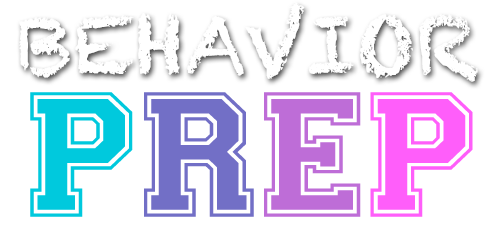F.4. Design and evaluate preference assessments.
Designing and evaluating preference assessments involves creating and implementing methods to determine what stimuli (e.g., items, activities) a client most prefers. These assessments help identify potential reinforcers that can be used effectively to increase desired behaviors. Evaluating the assessment ensures that the identified preferences are accurate and reliable over time.
Here are detailed descriptions of several commonly used single preference assessment methods and examples:
Single Stimulus Assessment
In a single stimulus assessment, the BCBA presents one item or activity at a time to the individual and observes their response. The BCBA records whether the individual engages with or shows interest in the presented item or activity.
Example: The BCBA presents a puzzle to a child and observes whether the child interacts with the puzzle, such as attempting to solve it, showing excitement, or requesting to play with it further.
Paired Stimulus Assessment
In a paired stimulus assessment, the BCBA presents two items or activities simultaneously and records the individual’s choice or preference between the two options. The presentation order is typically randomized to prevent biases.
Example: The BCBA presents a toy car and a stuffed animal to a child and records which item the child chooses to play with. The process is repeated with different pairs of items to determine the child’s preferences.
Multiple Stimulus Without Replacement (MSWO) Assessment
In an MSWO assessment, the BCBA presents a set of items or activities simultaneously. The individual selects one item, and it is removed from the set. The remaining items are then presented again, and the individual continues making selections until all items have been chosen or until a predetermined number of trials is completed.
Example: The BCBA presents a set of four snacks to a child. The child chooses one snack to eat, and it is removed from the set. The remaining snacks are presented again, and the child selects another snack. The process continues until all snacks have been chosen.
Multiple Stimulus With Replacement (MSW) Assessment
In an MSW assessment, the BCBA presents a set of items or activities simultaneously. After the individual makes a choice, the chosen item is returned to the set, and the items are reshuffled before the next presentation.
Example: The BCBA presents a set of six different toys to a child. The child chooses one toy to play with, and the chosen toy is placed back into the set. The toys are reshuffled, and the child makes another selection.
Free Operant Assessment:
In a free operant assessment, the BCBA provides the individual with access to a variety of items or activities and records the individual’s interaction or engagement with each item over a specified period. This assessment allows for unrestricted access and observation of preferred items or activities.
Example: The BCBA sets up a play area with various toys and materials. The child is allowed to freely explore and interact with the items, while the BCBA observes and records the child’s preferences and engagement levels.
During these single preference assessments, the BCBA collects data on the individual’s responses, such as engagement, duration of interaction, or selection choices. This information helps identify highly preferred stimuli that can be used as reinforcers to motivate the individual during behavior intervention programs. The chosen preferences can be incorporated into reinforcement systems, token economies, or individualized programming to increase the effectiveness and success of behavior-analytic interventions.
